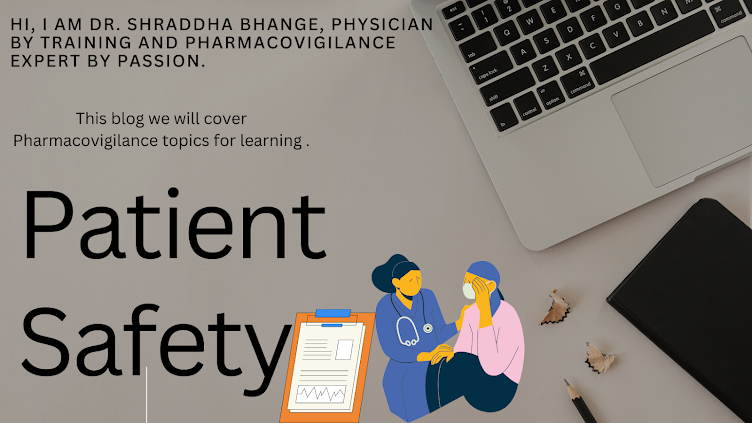ICH guidelines
E2C PERIODIC BENEFIT-RISK EVALUATION REPORT (PBRER)
Any PV professional aiming to work in or already
working in for aggregate reports like PSUR/PBRER has to be aware on how to
navigate and use the ICH E2C guidance.
ICH E2C goes into details about the various scenario's a MAH has to navigate
while preparing the PBRER. It also breaks down each section in PBRER and how to
write it and what are expectation in each section.
Below are generic timelines, format and content
outlined from the guidance document with my interpretations.
1. What ?
- The main purpose of PBRER is as name suggests talk about risk and benefits a medicinal product has and how they justify in terms of patient safety and treatability.
- PBRER should cover on efficacy/effectiveness of medicinal product that becomes available during the period it covers as said in ICH guideline.
- The new risk/benefits are to be compared with previous information of risk/benefits the medicinal product had.
2. How?
2.1 Single vs multiple PBRER?
- Single PBRER for an active substance is sufficient. This meaning if an active substance in various indications, dosage and regimens have same data lock points (DLP) is it sufficient to have one PBRER.
- However in a different indication or different route altogether permission from local HA needs to be taken on how PBRER will work in this situation.
2.2 Labelling document :
- The labelling document used for basis about adverse medicinal product reactions being listed or unlisted should be clearly specified .
- The common documents used is company core data sheet for (CCDS) in that section of company core safety information(CCSI) section, USPI (US package insert) European summary of product characteristics (SmPC), this are all reference safety information (RSI) documents.
- During PBRER submission if any new safety signal was identified then it should be clearly included and mentioned that this was a new change made in reference safety information of labeling documents.
- The change made in RSI maybe addition of any new safety signal, events in listedness, potential risk, overdose, contraindication, removal of any indication etc.
3. When are they needed? Timelines:
- PBRER are required by health authorities (HA) and regulatory authorities (RA) on periodic basis.
- The periodicity depends on local and regional timelines.
- PBRER should offer information about new risks or new safety information about the medicinal product that emerged in the period time it covers, PBRER are mostly covering period of 1 year/6month/2 years from the last PBRER that was submitted to HA.
- The periodicity of PBRER is decided from international birth date of medicinal product (date of the first marketing approval for any product containing the active substance corresponding to PBRER you are making).
- The period start date is from last PBRER or as finalized per HA requirement till the Data lock point (DLP) which is a date designated as cut off data date to be included in PBRER).
- The time given by Health authorities to MAH is – for PBRER covering intervals of 6-12 months-within 70 calendar days of DLP.
- For PBRER covering intervals in excess of 12 months within 90 calendar days.
- For PBRER requested on adhoc basis by HA 90 days or as specified in ad hoc request.
4. PBRER Format:
The PBRER format is given in ICH guidelines starting from title, table of
contents etc.
The PBRER format is designed in such a way that it covers following important
points:
1) Introduction to the active substance/medicinal product under PBRER, Its
worldwide marketing authorization status.
2) Actions taken by MAH in reporting interval about any safety concerns in that
period of PBRER.
3) Any changes made by MAH during PBRER time interval in safety information of
labelling documents or in any sections of medicinal product.
4) Patients exposed- In clinical trials (if any ongoing), spontaneous reports
from patients exposed by marketing of medicinal product in market collected via
hospitals, pharmacy etc.
5) List of serious unexpected, serious expected, non serious unexpected and non
serious expected.
6) Summary of all safety information in completed clinical trials, ongoing
clinical trial, post marketing sources from ICSR (individual case safety
reports) or literature, patient programs etc., long term follow ups. All
sources of adverse medicinal product reactions to be included herein.
7) A brief overview of safety which should include new identified risk,
potential risk, increased incidence of known risk, lack of efficacy, overdose,
new indication should be mentioned, any missing information on new signal
should be also explained.
8) A brief overview of benefits- Evaluation of known benefits and new
information on same should be explained.
9) PBRER should also be having any action planned, new study planned, medicinal
product registry data collection planned etc. in it.
Reference:https://database.ich.org/sites/default/files/E2C_R2_Guideline.pdf
Written by:
Dr.Shraddha Bhange.
Connect with me Via comments below. (I do not respond to Facebook messages)
Support the cause of better rural education with me:ThinkSharp Foundation http://thinksharpfoundation.org/#home


Excellent
ReplyDeleteThanks Vaibhav.
Delete